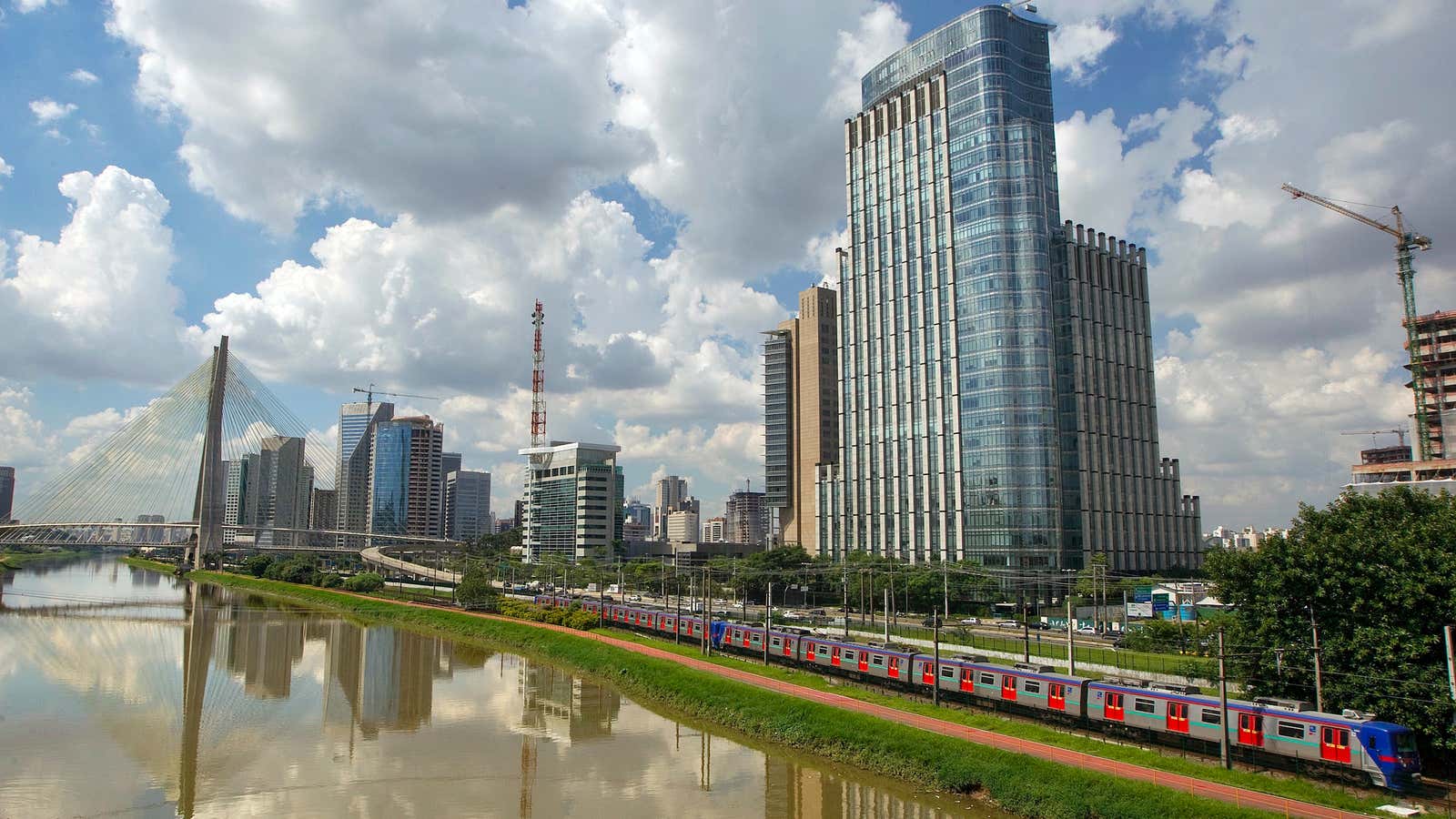Like most countries in the world, Latin America’s biggest economies are keeping interest rates at record lows to boost sagging growth. Two decades ago, that would have been unthinkable. The region was wracked by inflation, and the idea of central banks keeping price gains in check was almost impossible. But now the “low-for-long” rate example set by the US Federal Reserve, which has promised to keep rates at or near zero at least until 2015, is spreading.
Devaluations, bailouts, fiscal overhauls and bank restructurings have changed Latin America, along with windfall earnings from oil and mining, which were often smartly socked away. When the 2008 financial crisis sent much of the global economy into a tailspin, countries across the region could point to a stable banking sector and tap swelling currency reserves to finance a flood of defensive stimulus spending, which in many cases helped to stave off a downturn. Brazil transformed itself from an IMF debtor to an IMF creditor in just seven years, loaning the IMF $10 billion in 2009. “It was the rich who were responsible for the crisis, and we weren’t going to allow them to put the blame on the poor people of the world,” said then-Brazilian president Luiz Inacio Lula da Silva.
Since 2011, Brazil’s central bank has trimmed its benchmark rate five full percentage points. Signaling its own kind of low-for-long policy, it said that keeping the record-low rate “unchanged for a prolonged period of time is the most adequate strategy” (Portuguese). Mexico’s bank, which has held at a record-low 4.5% since 2009, acknowledged the need to watch inflation closely, but decided to hold rates (pdf), too. Colombia’s bank had raised rates over the last year-and-a-half, but this year began cutting; Chile’s has done the same.
The dovish moves are a bid to boost exports, which have this year declined in almost every Latin American country as US, EU and Chinese demand stalls; and they’re a bet that access to cheaper credit will inspire a growing middle class to help Latin America spend its way out of a downturn. That reliance on domestic consumption should help to diversify local economies, making them less export-dependent.
It should also drive up inflation, the bugaboo of the past. But while it has quickened to 5.6% in Brazil in mid-October and to 4.8% in Mexico in September, those rates are still lower than in India, Russia and many other big emerging markets. Only Venezuela and Argentina, which both spend lavishly and have currency controls that boost the cost of imports, have seen double-digit price gains. Policymakers are dismissing recent upticks as temporary, driven by rising global food prices rather than by domestic conditions. Because they’ve paid close attention to inflation in recent years, today’s Latin American central bankers would seem to have earned the right and the room to focus now on growth—more proof that times have changed.
